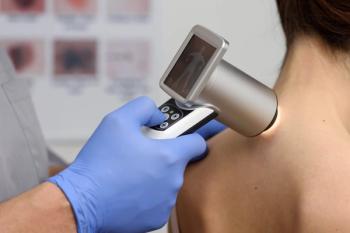
Undiagnosed diabetes: A high cost for the health system
Consequences range from cardiovascular disease to renal disease
An immediate issue, and one of tremendous importance, is the under diagnosis of diabetes. A recent estimate from the National Diabetes Statistics Report puts the number of undiagnosed diabetics in the U.S. at
People who are unaware they have diabetes are at risk for progression to the serious complications of high blood sugar such as cardiovascular and renal disease. There are few publications on the causes of under diagnosis. However, we can postulate that they fall into three general groupings:
1) Lack of access to care;
2) Failure to obtain screening for diabetes;
3) Inaction on the part of patients who screen positive but do not follow up, or do not understand that they have diabetes.
Access to care, as measured by those with insurance coverage, has clearly improved with the implementation of insurance exchanges and Medicaid expansion under the Affordable Care Act. However, it is not yet clear how many people are actually seeing primary care and other physicians for check ups and screenings.
Failure to obtain screening is directly related to access to care, but also to what happens during encounters with the healthcare system. If a patient’s encounters primarily consist of emergency or acute care visits, that patient will not likely receive screening for diabetes, breast cancer, colon cancer or a range of other conditions. Even within the context of a primary care visit it is unclear how many Americans receive appropriate screening.
In a positive step, the U.S. Preventive Services Task Force has
It is also possible that some patients who screen positive do not follow up on the screening. This may be because of a misunderstanding of what the results mean, or fear of what comes next. In any case, this is clearly a failure of our healthcare system and of our efforts to improve health literacy in the U.S.
There are positive steps that we can take to reduce the number of undiagnosed people.
- Encourage preventive service visits with healthcare providers. Most people with health insurance can receive screenings and other preventive services covered at first dollar with no or low copays.
- Promote the use of screening tests, especially in those at risk for developing Type 2 diabetes (overweight or obese adults over age 45, those who do not regularly exercise three times per week, or women who have had gestational diabetes).
- Increase awareness of the serious problems caused by diabetes and encourage the deployment of the
CDC programs on the detection and treatment of pre-diabetes.
In conclusion, we need to take a patient centric view of diabetes prevention and treatment that includes increased opportunities for screening and an increased focus on prevention via diet and exercise.
Edmund Pezalla, MD, MPH, is vice president and national medical director for pharmaceutical policy and strategy, Aetna.
Newsletter
Get the latest industry news, event updates, and more from Managed healthcare Executive.






















































